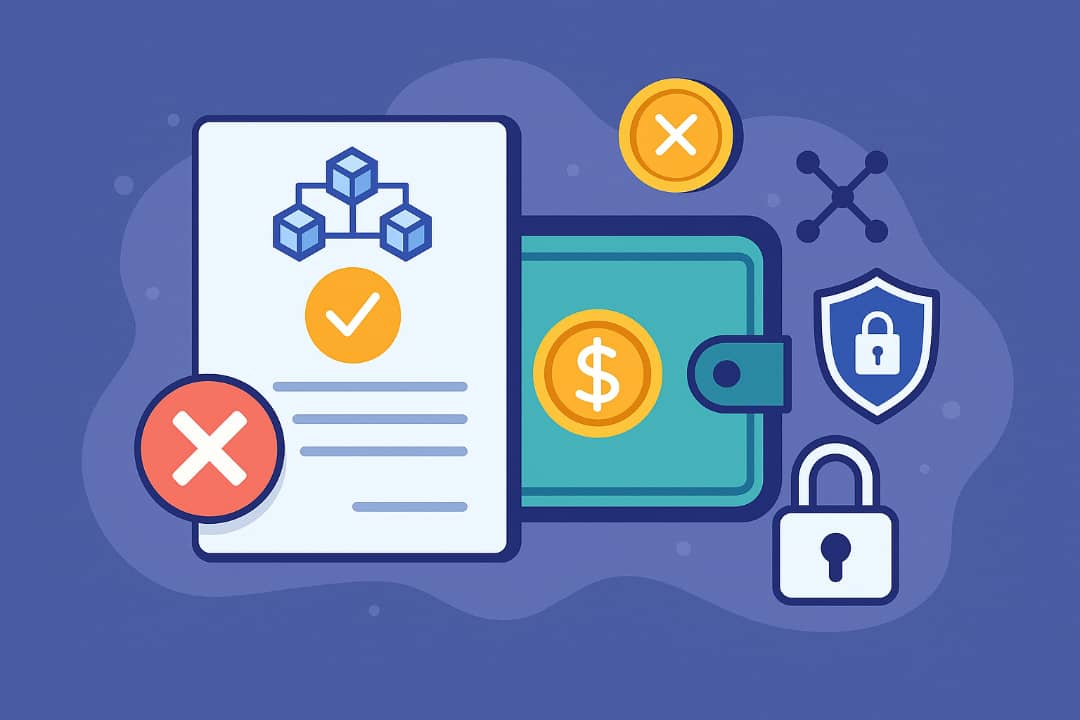How to Revoke Smart Contract Permissions to Protect Your Wallet

Smart contracts enable decentralized applications to operate seamlessly by interacting directly with your wallet. While this connection provides convenience and efficiency, it can also introduce security risks.
Granting unlimited token approvals can leave your assets exposed to potential threats. That is why regularly reviewing and revoking unnecessary smart contract permissions is a key step in protecting your wallet and keeping your funds safe.
Key Takeaways
• Smart contracts let dApps interact with your wallet but can pose security risks.
• Review your token approvals regularly and remove unnecessary ones.
• Disconnect your wallet from dApps you no longer use.
• Only grant the minimum permissions needed for each transaction.
• Monitor your wallet for unusual or suspicious activity.
Smart Contract Permissions
Smart contracts are self-executing contracts with the terms of the agreement directly written into code. When you interact with a dApp, you often grant it permission to spend your tokens on your behalf.
These permissions are typically granted through token approvals, which can be set to unlimited amounts. While convenient, unlimited approvals can be exploited if the dApp’s smart contract is compromised.
Leaving unused or forgotten approvals active increases the risk of unauthorized access to your funds. Hackers can exploit these permissions to transfer your tokens without your consent.
Step-by-Step Guide to Revoke Smart Contract Permissions
1. Choose a Tool
There are several reliable platforms that make it easy to see and revoke smart contract permissions from your wallet. Revoke.cash is a popular choice because it supports multiple networks and has a simple, user-friendly interface. If you are on Ethereum, Etherscan lets you check token approvals quickly. BscScan offers the same functionality for Binance Smart Chain users, while Polygonscan works well for those using the Polygon network.
2. Connect Your Wallet
Open your chosen platform and connect your wallet. Make sure your wallet is set to the correct network, such as Ethereum, Binance Smart Chain, or Polygon, so you can see all relevant approvals. Confirm that your wallet address matches the one you intend to manage, especially if you have multiple wallets.
3. Review Existing Approvals
Once connected, the platform will display a list of all active token approvals associated with your wallet. Review these approvals carefully by looking for any that are unnecessary or granted to dApps you no longer use.
4. Revoke Unnecessary Approvals
For each approval you wish to revoke, click the “Revoke” button next to it and then confirm the transaction in your wallet. Keep in mind that revoking permissions is an on-chain action, so a small gas fee will apply. Gas fees can vary depending on network congestion, so consider timing your revocations when fees are lower.
5. Disconnect Unused dApps
In addition to revoking token approvals, consider disconnecting your wallet from dApps you no longer use. This prevents them from accessing your wallet’s public information and balances.
Best Practices for Managing Smart Contract Permissions
• Review Approvals Regularly: Make it a habit to check your token approvals at least once a month and revoke any that are no longer needed.
• Limit Permissions: Only grant dApps the minimum approval required for a transaction, rather than unlimited access.
• Stick to Trusted Platforms: Interact only with reputable dApps and platforms to reduce the risk of exposure.
• Monitor Your Wallet: Keep an eye on your wallet’s transaction history for any unusual or unauthorized activity.
Conclusion
Smart contracts are essential to how dApps operate, but they can introduce security risks if left unchecked. By routinely reviewing and revoking unnecessary smart contract permissions, you can greatly reduce the chances of unauthorized access to your funds. Following these practices is a simple yet effective way to keep your cryptocurrency wallet secure.

